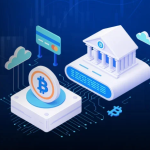Banking-as-a-Service: The Future of Modern Banking Infrastructure

The landscape of modern banking is changing rapidly, and as financial institutions continue to adapt, Banking-as-a-Service (BaaS) has emerged as a key solution. Building a bank from the ground up is a complex, time-consuming, and costly process, especially with the regulatory requirements and infrastructure demands involved. However, with the rise of digital finance, both banks and non-bank financial entities are increasingly turning to technology to offer more products and services while streamlining customer experiences. But is it worth building a complete banking infrastructure and obtaining a banking license independently? The answer for many lies in leveraging BaaS.
What is Banking-as-a-Service (BaaS)?
BaaS is a model where banks and fintech companies use third-party providers to access various banking services such as payments, account management, loans, and card services via APIs (Application Programming Interfaces). Through BaaS, non-bank companies like fintech startups and tech firms can integrate banking features into their platforms without needing to establish their own banking infrastructure. This service has grown rapidly in recent years. In 2022, the global BaaS market was valued at $541.62 million and is projected to reach $5.5 billion by 2033, with a compound annual growth rate (CAGR) of 23.3%.
The growth of BaaS can be attributed to several factors, including the increased demand for digital banking, regulatory changes like the European Union’s PSD2, and the rise of fintech startups. These changes have led to a more open, collaborative banking ecosystem, allowing for better integration between traditional banks and tech-driven disruptors. This model allows non-banking entities to focus on their core business while banks manage the complex infrastructure, leading to the creation of new, innovative financial products and services.
BaaS vs. Open Banking vs. Embedded Banking
While often used interchangeably, BaaS, Open Banking, Embedded Banking, and API Banking have distinct differences.
Open Banking: This model enables licensed financial institutions and fintechs to securely share customer data via APIs, promoting competition and enhancing the customer experience. Open banking is focused on providing transparency and customer control over financial data.
Banking-as-a-Service (BaaS): BaaS allows licensed banks to sell or rent their banking infrastructure and products to non-banking institutions. This lets third parties integrate banking features into their products without building the entire infrastructure themselves.
Embedded Banking: Embedded banking refers to integrating banking services into non-financial platforms, allowing customers to access banking features seamlessly within other applications, such as e-commerce or ride-sharing platforms.
API Banking: APIs serve as the underlying technology for BaaS, Open Banking, and Embedded Banking. They allow secure, real-time data sharing between financial institutions and third-party developers, facilitating the integration of banking functionalities into various platforms.
How Banks Use BaaS to Grow Revenue
For banks to offer BaaS, they need to operate on shareable infrastructure. Traditional banks with legacy systems often struggle with integrating new technologies. To overcome this, many banks are transitioning to a platform-based model, using modular, API-driven infrastructures that allow them to offer banking services to fintechs and startups.
Here are two key ways banks generate revenue through BaaS:
Offering White-Label Banking Solutions: Banks provide infrastructure to third parties who operate under their own brand. In return, the bank earns revenue from subscription fees, transaction fees, and revenue-sharing models. This approach helps banks expand their customer base and diversify revenue streams beyond traditional interest income.
Expanding Product Portfolio: By leveraging their existing infrastructure, banks can create new financial products and services that cater to market gaps identified through their BaaS partnerships. This helps banks remain competitive and address evolving customer needs.
Starling Bank, for instance, has successfully used BaaS to drive growth. Starting as a challenger bank, Starling now serves millions of customers across Europe, with a substantial increase in profits, revenue, and loan offerings since its inception. Starling’s ability to expand through BaaS partnerships has positioned it as a leader in the space, demonstrating how BaaS can fuel significant growth.
Benefits of BaaS for Banks
In addition to generating new revenue streams, BaaS offers several other benefits to banks:
Accelerating Innovation: Partnering with fintechs allows banks to tap into new, disruptive ideas, leading to the development of innovative products and services that improve the customer experience.
Access to New Markets: By collaborating with fintechs and non-bank entities, banks can penetrate markets they may not have reached otherwise, including underserved domestic and international segments.
Lower Regulatory Burdens: Non-bank partners often take on some of the regulatory responsibilities, easing the compliance burdens for banks. This allows banks to focus on core operations while navigating complex regulatory requirements.
Reduced Customer Acquisition Costs: Traditional banks spend a significant amount on acquiring customers, with costs ranging from $100 to $200 per customer. By leveraging BaaS, banks can reduce these costs to between $5 and $35, significantly improving cost-efficiency.
Strategic Differentiation: Embracing BaaS allows banks to differentiate themselves from competitors by offering innovative, customer-focused financial services. This approach strengthens brand value and builds long-term customer loyalty.
Building a Successful BaaS System
To implement BaaS successfully, banks need a solid combination of technology and business strategies. Here are the key pillars to focus on:
- Clear Market Understanding and Risk Assessment: Understand the market potential and assess risks before implementing a BaaS system.
- Infrastructure Modernization: Transition from legacy systems to modular, API-driven architectures that allow for more flexibility and future scalability.
- Choosing the Right BaaS Products: Select the services and tools that will best meet the needs of the target market, such as payments, account management, and lending.
- Monetization Strategy: Define revenue models, including fee structures and pricing tiers for partners.
- User Experience (UX): Create intuitive, easy-to-use interfaces that offer a seamless experience for both partners and customers.
- Compliance and Security: Implement strong security measures to protect customer data and ensure compliance with regulations.
- Analytics and Insights: Use data analytics to generate insights that can help refine offerings and improve customer experiences.
- Support and Maintenance: Provide ongoing support to ensure smooth operations for partners and customers using the BaaS system.
Final Thoughts
BaaS has emerged as a game-changing model for modern banking, enabling both banks and fintechs to provide innovative, efficient services without the need for massive infrastructure investments. By embracing BaaS, financial institutions can unlock new revenue streams, tap into previously unreachable markets, and foster a more collaborative, flexible, and customer-centric banking ecosystem. As the financial landscape continues to evolve, BaaS will undoubtedly play a crucial role in shaping the future of banking.


 English
English 











































































































































































































































































































































































